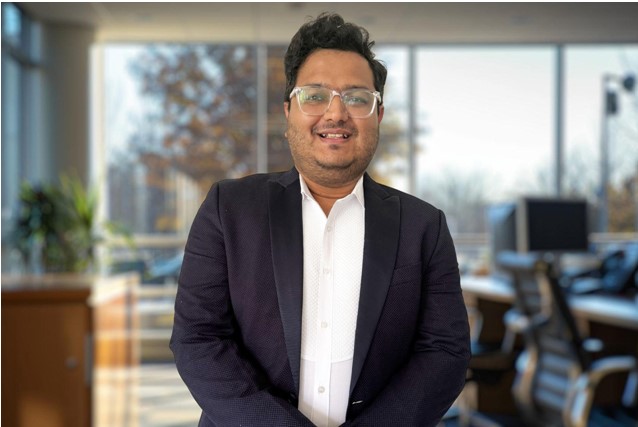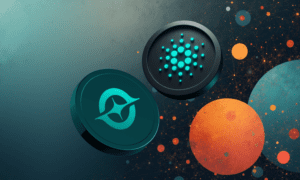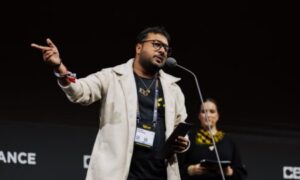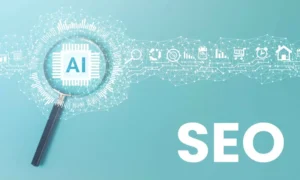In an era where mobile technology dictates the pace of innovation, engineers like Rutul Desai are redefining what’s possible for enterprise-scale applications. Rutul Desai stands at the intersection of cutting-edge mobile architecture and real-world enterprise outcomes. His contributions have modernized legacy platforms across sectors—banking, healthcare, and beyond—delivering scalable, secure, and intuitive experiences to millions of users.
Rutul’s journey began with a fascination for how code could solve systemic inefficiencies. Starting as a full-stack developer, he quickly gravitated toward mobile engineering, captivated by the challenge of building apps that meld seamless UX with bulletproof reliability. This passion led him to specialize in reactive architectures (SwiftUI, Combine) and data-driven optimization, tools he’s leveraged to overhaul apps for giants like Capital One. His solutions don’t just function—they anticipate user needs, whether through AI-powered personalization or real-time financial insights. Today, Rutul’s technical leadership extends beyond code: He’s a mentor, open-source contributor, and advocate for ethical AI, ensuring the next generation of developers builds technology that’s as responsible as it is revolutionary.
Revolutionizing Healthcare Through Mobile Technology
Healthcare systems often struggle with fragmented data, manual workflows, and compliance hurdles. At Clinic Management and Development Services, Rutul Desai led the development of an iOS app that automated auditing and billing, reducing administrative overhead by 50% and minimizing human errors in revenue tracking. His solution integrated with SQL Server databases to deliver real-time insights into claim statuses and payment cycles, which helped clinics improve cash flow predictability.
Looking ahead, AI and wearables will be transformative. Imagine an app that analyzes wearable data (e.g., heart rate, glucose levels) and alerts doctors to anomalies before a patient even notices symptoms. With HIPAA-compliant cloud solutions like AWS HealthLake, we can unify siloed records while ensuring security. The future lies in predictive care, where mobile apps don’t just react but anticipate needs, whether it’s medication reminders or early intervention alerts.
Enterprise Mobility: Building Scalable Apps for Millions of Users
The biggest challenge was technical debt—the app relied on massive ViewControllers and tight coupling, making updates risky. Desai spearheaded the adoption of a reactive architecture (MVVM + Combine) to decouple logic from UI, which made the codebase more testable and maintainable. Key improvements included:
- Modularization: Breaking features into Swift packages allowed teams to work in parallel without merge conflicts.
- Performance: Replacing Core Data with Realm for offline caching cut load times by 20%.
- Analytics: Integrating OneTag and New Relic gave us granular insights into user flows, helping us prioritize high-impact fixes.
Scalability wasn’t just about code—it was about culture. We enforced unit/UI testing (90%+ coverage) and CI/CD pipelines (Fastlane + Bitrise) to catch regressions early. This shift reduced production incidents by 40% and empowered developers to iterate faster.
The Future of Mobile Development: AI, 5G, and Beyond
AI is turning apps into proactive assistants. For example:
- CoreML for personalization: An e-commerce app could analyze past purchases + browsing behavior to surface tailored recommendations in real time.
- ARKit for immersive experiences: Imagine trying on glasses via AR or navigating a store with AI-powered indoor maps.
5G’s low latency unlocks cloud-heavy apps (e.g., real-time video analysis for telehealth). The advent of 5G technology is revolutionizing numerous sectors, notably within cloud-dependent applications. One of its most compelling attributes is its exceptionally low latency, a critical factor in applications demanding near-instantaneous data transfer and processing. This low latency is particularly transformative for cloud-heavy applications. Consider real-time video analysis, a capability with vast potential in the realm of telehealth.
The next frontier is edge AI—running lightweight models on-device to preserve privacy. Apple’s Neural Engine and TensorFlow Lite are making this feasible, even for resource-intensive tasks like natural language processing (NLP).
Native Where It Matters, Hybrid Where It Counts
It’s about trade-offs. For performance-critical apps (e.g., finance, healthcare), native (Swift/SwiftUI) is unbeatable—think smooth animations, precise memory management, and tight hardware integration (e.g., FaceID, ARKit).
But React Native has its place:
- Startups need a single codebase for iOS/Android.
- Apps with simple UIs where developer velocity outweighs pixel-perfect performance.
Desai advises using hybrid frameworks when resources are limited, but champions native technologies for flagship products. At Kunai, we used React Native for internal tools but SwiftUI for customer-facing apps where polish mattered.
Mentorship and Industry Leadership
Three key principles:
- Master the fundamentals: Understand memory management (ARC), concurrency (async/await), and design patterns (Delegate, Observer) before chasing trends.
- Build in public: Contribute to open-source (GitHub) or write about your learnings. It sharpens your skills and builds credibility.
- Think beyond code: Learn how your work ties to business goals. Did your optimization reduce server costs? Improve retention? That mindset gets you promoted.
He regularly conducts iOS workshops, sharing best practices with emerging mobile developers. The best feedback? When attendees say they shipped their first app or landed a job using those skills.
Ethics in Tech: Privacy, Security, and Responsible AI
Privacy by design is non-negotiable. While at Capital One, Desai oversaw the implementation of privacy-first frameworks:
- Data minimization: Only collecting what’s essential (e.g., masking credit card digits in logs).
- On-device processing: Using Apple’s Differential Privacy to aggregate analytics without exposing individual behavior.
For AI, transparency matters. If an app uses ML to deny loan applications, users deserve to know which factors influenced the decision. Frameworks like IBM’s AI Fairness 360 help audit models for bias.
Developers must advocate for ethics, whether it’s rejecting invasive tracking or pushing back on unethical feature requests. Tech isn’t neutral; it’s a reflection of our choices.
Recognized for his blend of technical mastery and strategic foresight, Rutul Desai continues to influence the direction of mobile innovation across sectors. Whether he’s architecting enterprise-scale iOS apps, pioneering AI integrations, or mentoring the next generation of developers, his work proves that mobile technology is more than tools—it’s a catalyst for progress. As industries evolve, Rutul’s blend of innovation, ethics, and leadership will continue to shape the future of digital experiences.



































